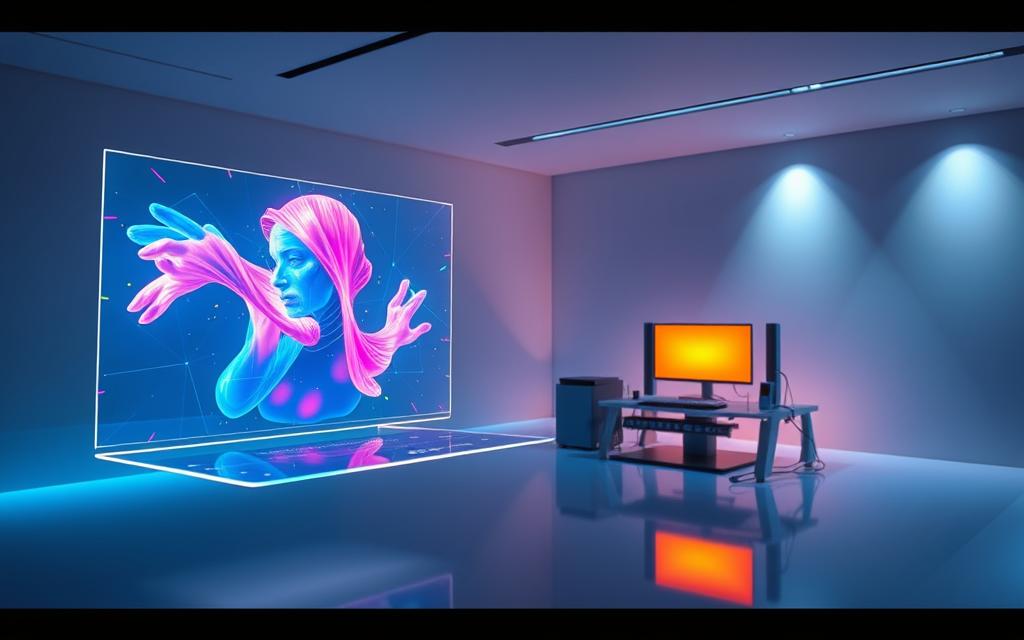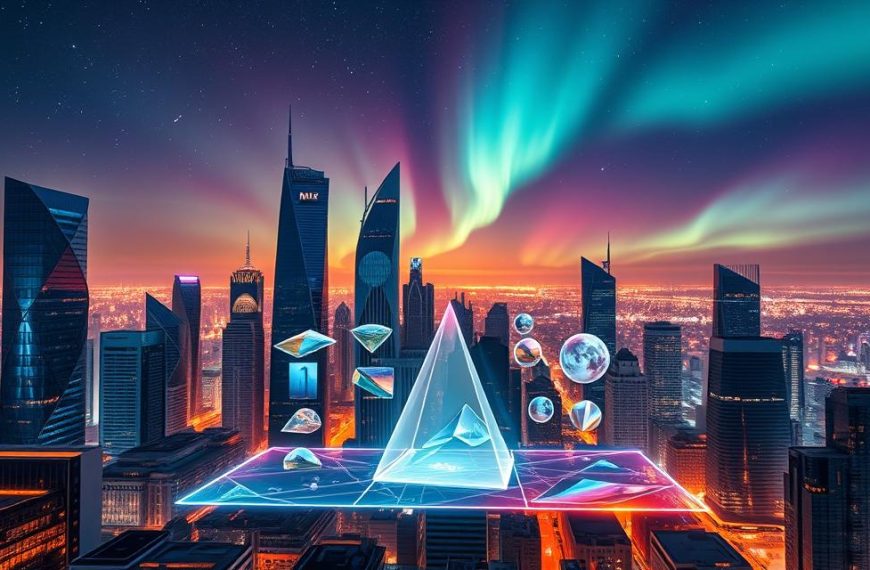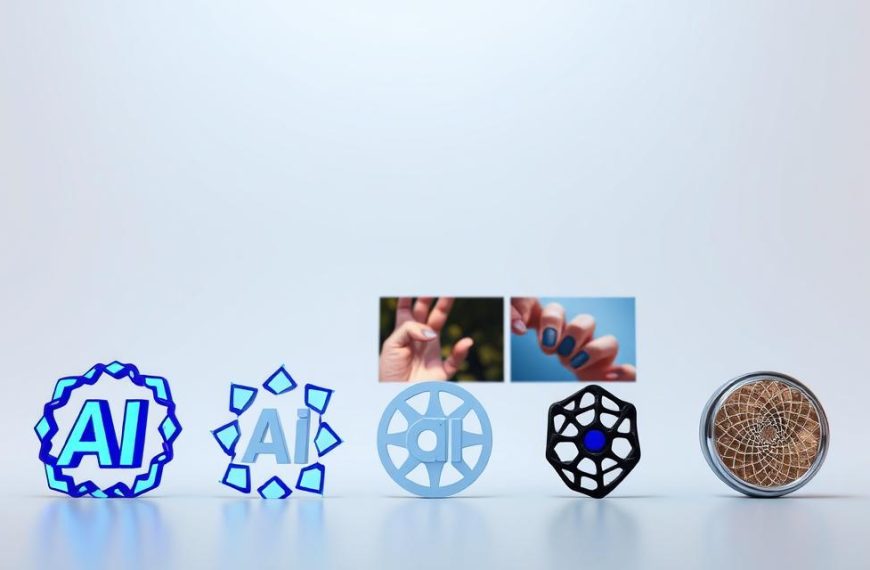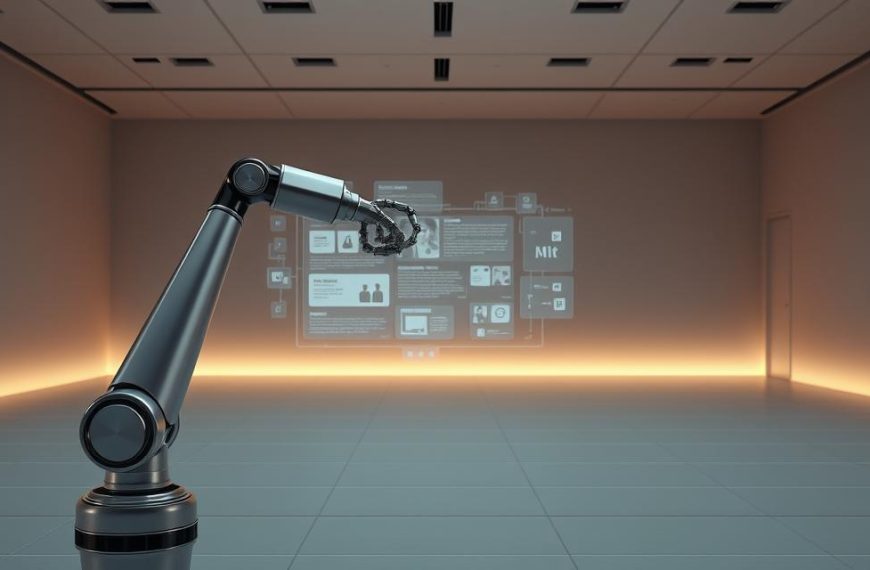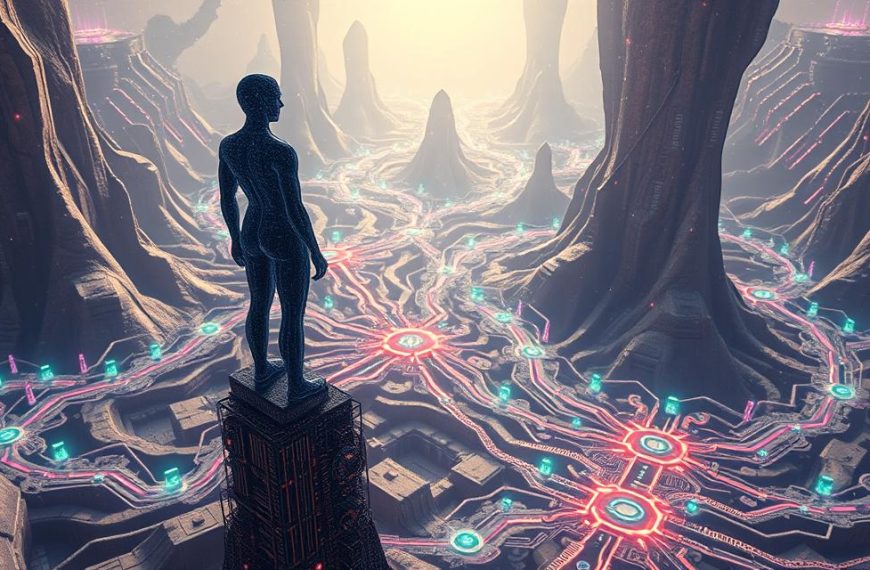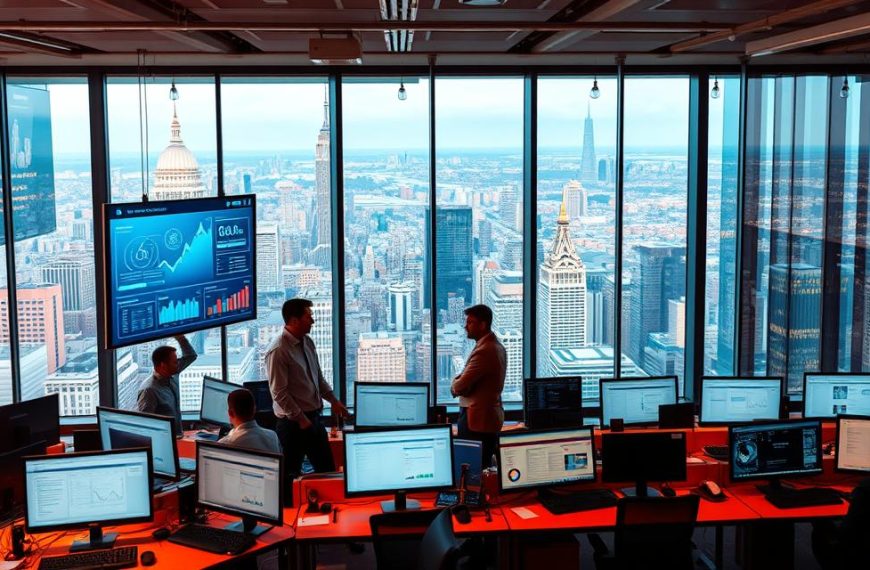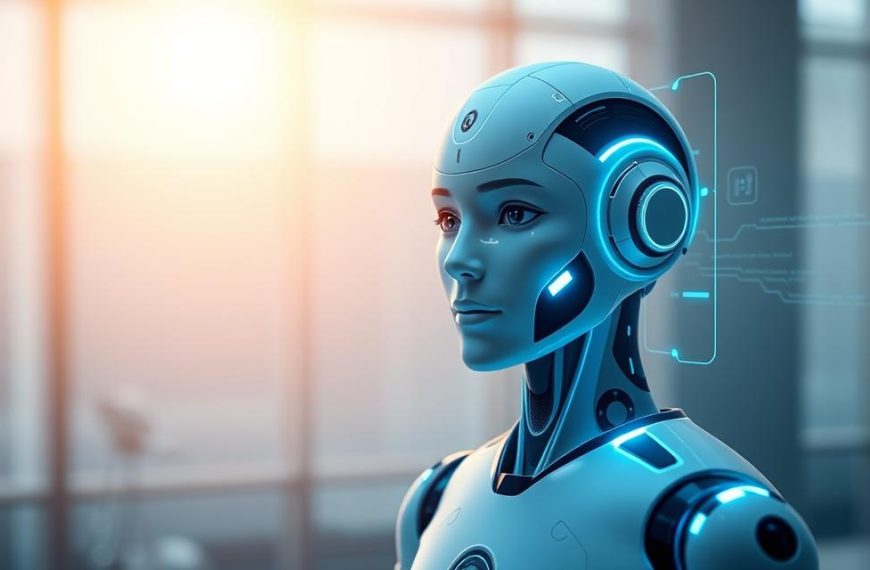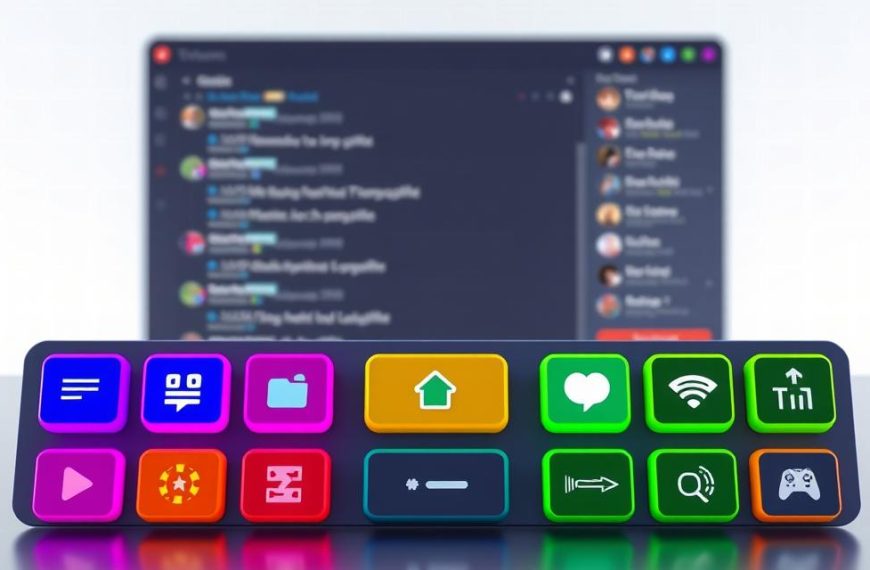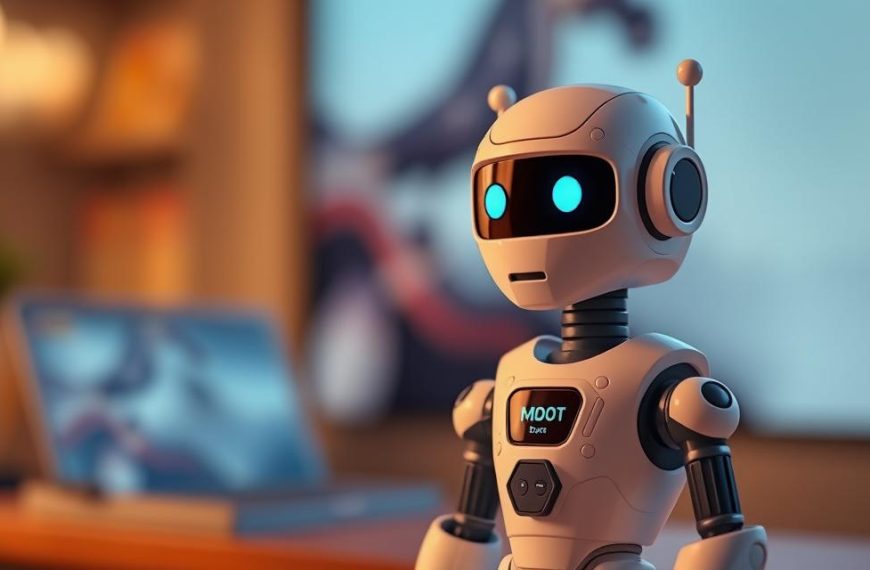Imagine turning your written ideas into professional videos with just a few clicks. That’s the magic of AI video technology. It’s changing how we make visual content in many fields.
Platforms like HeyGen make this tech easy for everyone. Marketers, teachers, and creators can now make amazing videos without needing to know how. It makes something complex and slow into something simple and fast.
The text to video change means anyone can make engaging videos fast. These tools quickly turn your input into professional videos. This big step forward in digital content making is a game-changer.
This tech opens up new ways to be creative and communicate. It makes top-notch video creation available to all. The barrier to making professional videos has never been lower.
What is AI Video Generation?
Artificial intelligence has changed how we make visual content. It turns simple text into moving videos. This is a big step forward in making content.
Defining Text-to-Video Technology
Text-to-video tech turns written descriptions into real videos. It uses smart algorithms to do this. This means anyone can make professional videos with just text.
The system breaks down text into visuals, scenes, and character movements. This new way of making content is exciting for many industries.
Core Components of AI Video Systems
AI video systems use two key technologies. They work together to understand text and make great videos.
Natural Language Processing (NLP)
NLP is the heart of AI video systems. It understands text inputs. It figures out what visuals, scenes, and emotions are needed.
Platforms like HeyGen use nlp to get meaning from text. They find out who, where, what’s happening, and how it feels. This helps make videos that match the text.
Generative Adversarial Networks (GANs)
GANs are the creative power behind AI videos. They are two neural networks that work together. One makes images, the other checks if they look real.
This back-and-forth makes the visuals very lifelike. Tools like Pixlr’s AI video generator use gans to make characters and scenes look real.
The mix of nlp and gans is a big deal in machine learning. It lets text be turned into great videos.
“The mix of NLP and GANs in video making is very exciting in AI technology.”
These technologies are getting better all the time. They will soon make it even easier to turn text into videos.
The Process of Transforming Text into Video
Turning written content into visual media is a complex process. It combines understanding language with creativity. This shows how advanced artificial intelligence is in making content.
Text Analysis and Semantic Understanding
The first step is semantic analysis. AI systems break down the text to find its meaning, context, and mood. They use special algorithms to understand sentences better:
- Main subjects and objects within the narrative
- Action verbs and descriptive adjectives
- Temporal sequences and causal relationships
- Emotional undertones and stylistic elements
This deep understanding lets the system know what the text really means. For example, HeyGen’s AI Studio can understand scripts to set the right pace and mood for visuals.
Visual Concept Generation and Storyboarding
After understanding the text, the system starts planning visuals through storyboarding. This phase turns text into pictures by:
- Selecting the right visual style for the content
- Deciding on camera angles and shot compositions
- Planning character movements and scene changes
- Choosing colours and lighting
Pixlr’s video generator shows how this works. It turns pictures into moving scenes based on text. The system makes a detailed plan before making the final video.
Video Rendering and Output Optimisation
The last step is making the video through video rendering. This stage puts all the visuals together into a final product. It makes sure the video looks great:
- Making animations and transitions smooth
- Adding visual effects and colour
- Matching audio with the visuals
- Preparing the video for different platforms
Today’s systems can make videos that look professional. They offer options like 1080p or 4K, custom sizes, and no watermarks. The process aims for quality and speed, making videos ready for use in marketing, education, and entertainment.
This whole process shows how AI turns ideas into real videos. It’s changing how we make content in many fields.
Key Technologies in AI Video Generation
Modern AI video systems are amazing thanks to advanced tech. They turn text into moving pictures. This tech is at the forefront of AI research.
Deep Learning Frameworks
At the core of AI video systems are deep learning frameworks. They understand text and create visuals from it. This lets machines grasp emotions and scenes described in words.
OpenAI’s Sora Model
OpenAI’s Sora is a big step forward in text-to-video tech. It makes high-quality videos from text. It keeps the video looking good and flowing smoothly.
Sora uses smart algorithms for motion and scene changes. It can make videos up to a minute long. It follows instructions well and keeps the video looking sharp.
Google’s Imagen Video
Google’s Imagen Video uses a special model to make HD videos. It starts with low-resolution videos and improves them step by step.
It does a great job of matching the video to the text. Imagen Video can create videos in different styles. It works at 24 frames per second with a 1280×768 resolution.
Advanced Neural Networks
AI video generation relies on neural networks. These networks have changed how machines handle data. They are key to making videos look real.
Transformer Architectures
Transformer architectures are key for AI video systems. They use self-attention to understand data. This helps machines grasp the connections between different parts of the input.
The transformer is great for videos because it handles long sequences well. It keeps characters and scenes consistent in the video.
Diffusion Models for High-Fidelity Visuals
Diffusion models are top for making visuals. They add noise to data and then learn to remove it. This creates new samples from noise.
For videos, diffusion models work on both space and time. This makes videos that flow well and look good.
| Technology | Key Features | Primary Applications | Notable Implementations |
|---|---|---|---|
| Deep Learning Frameworks | Text understanding, context processing, visual concept mapping | Text-to-video conversion, scene generation | OpenAI Sora, Google Imagen |
| Transformer Architectures | Self-attention mechanisms, sequence processing | Maintaining temporal consistency, handling long videos | Various research implementations |
| Diffusion Models | Progressive refinement, high-quality output | Photorealistic video generation, style transfer | Stable Video Diffusion, Midjourney |
| Advanced Neural Networks | Complex pattern recognition, multi-modal processing | Realistic avatar generation, lip-sync accuracy | HeyGen AI avatars, Synthesia |
These techs are always getting better. Researchers keep improving models and quality. This makes videos from text more realistic and detailed.
Applications and Use Cases
AI video generation technology has become a reality, helping many industries. It makes creating visual content fast and easy. This is thanks to text-to-video systems.
Marketing and Advertising
Brands use AI video tools to change how they promote themselves. HeyGen’s platform lets companies make product demos quickly. These marketing videos keep the brand look and save money.
Pixlr’s ads turn text into catchy commercials. It looks at product descriptions and makes videos that show off the best features. This makes making ads faster.
Entertainment and Film Production
AI helps content creators make entertainment fast. VideoGPT lets YouTubers and influencers make daily videos from text. It makes videos that fit well on TikTok and Instagram.
AI is also used by indie filmmakers. It helps them see what their storyboards and scenes could look like. This lets directors try out ideas before filming.
Educational and Training Materials
Schools and companies use AI for training videos. HeyGen makes it easy to create onboarding videos. This helps train people all over the world the same way.
Pixlr helps teachers turn lessons into videos. It makes hard ideas easy to understand with animations. This helps students learn better and saves teachers time.
AI video generation is getting more useful every day. It helps with everything from company messages to telling stories. These tools make making videos easy for everyone.
Advantages and Current Limitations
AI video generation is changing fast, showing both great benefits and challenges. It has moved from being just an idea to a useful tool. This journey shows its huge promise and the hurdles it must clear.
Benefits: Efficiency, Creativity, and Accessibility
The benefits of AI video tools are big. They are changing how we make content in many fields. For example, HeyGen makes making videos much faster, from weeks to hours, without losing quality.
These systems also open up new creative paths. You can try out different styles and stories easily, without needing to know a lot about tech. This makes it easier for small teams and solo creators to compete with big studios.
Another big plus is how easy these tools are to use. Pixlr shows how AI video tools can make making videos simple. Even those who aren’t tech-savvy can make great videos with just a few clicks.
Challenges: Ethical Issues and Technical Hurdles
But, there are also big limitations to consider. Ethical worries about AI avatars are a big concern. Questions about consent, fairness, and misuse are pressing for developers and regulators.
There are also technical issues. VideoGPT’s work shows that making videos can take a lot of time, depending on how complex they are. Making videos that look good in all situations is also a challenge.
AI videos sometimes struggle to show emotions or have characters interact in a realistic way. These problems show how far we are from making AI videos that feel real.
Future Developments and Improvements
The future of AI video generation looks bright. Developers are working to make videos look more real and to understand emotions better. They are also creating rules to make sure AI videos are fair and respectful.
Using AI video with other new techs is another exciting area. Mixing it with augmented reality, virtual production, and interactive stories could lead to new kinds of content.
Getting better at making videos faster and looking better is also a focus. This will make AI video more useful for live events and other situations where speed matters.
| Aspect | Current State | Future Direction | Impact Level |
|---|---|---|---|
| Production Speed | Hours to days | Minutes to hours | High |
| Output Quality | Good with some inconsistencies | Consistently professional | High |
| Ethical Safeguards | Developing frameworks | Comprehensive protocols | Critical |
| Accessibility | Moderate technical barrier | Minimal barrier to entry | Medium |
| Creative Flexibility | Broad but limited depth | Extensive and nuanced | High |
As these changes happen, finding the right balance between tech and ethics will be key. This will help AI video generation fit smoothly into how we make and watch videos.
Conclusion
AI video generation is changing digital media. It makes making videos faster, more creative, and open to everyone.
We looked at the basics like deep learning and neural networks. We explained how text turns into video. It’s used in marketing, entertainment, and learning.
The advantages are obvious: it’s quicker, cheaper, and brings new ideas. But, there are also challenges like ethics and improving technology. Tools like HeyGen and VideoGPT are making video making easier for all.
This summary gives the main points for experts. The future looks bright for AI in video making. Using AI tools can open up new ways to be creative.

